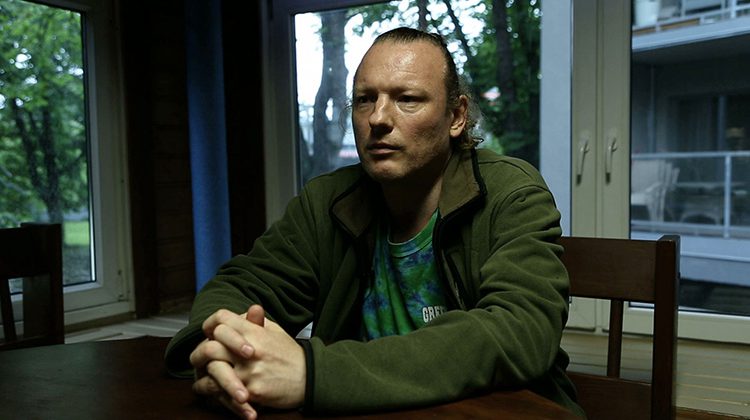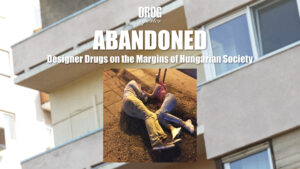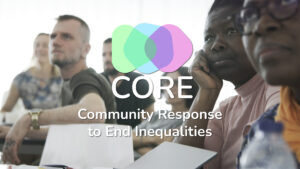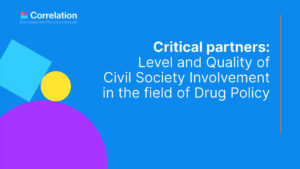Estonia is a country hit hard by the opioid overdose epidemic. People struggling with overdoses in other countries can learn a lot from the Estonian example about what works and what does not work in preventing deaths and suffering. We interviewed Mart Kalvet, an activist representing LUNEST, the Estonian organisation of people who use drugs.
Drugreporter: Tallinn is often called the overdose capital of Europe. Why do so many people in Estonia die of overdose?
Mart Kalvet: People in Estonia, especially in Tallinn, surrounding areas, and in the Ida-Viru County, where the concentration of Russian-speaking people and/or people without citizenship is greater, die of overdoses at a greater rate because they use street opioids, often in combination with other substances – both legal, like alcohol and prescription medicines (clonazepam, diphenhydramine, etc.), as well as illegal, like amphetamines. Most of the people who die of overdoses are injecting drug users. The primary cause of death is almost always listed as fentanyls, because fentanyls are pretty much the only street opioids available in Estonia. There is no one clear explanation as to why that is. The “original” fentanyl — 50 to 100 times more potent than morphine — had made occasional appearances on the market before the start of the current overdose epidemic, but didn’t catch on as the main drug of choice of opioid users before the year 2002. The combination of a long drought in Afghanistan, the post-9/11 US military action in the region, and scrupulous work by Estonian anti-narcotics agencies may have been seminal in crashing the heroin market and facilitating the emergence of suppliers of synthetic black market opioids in Estonia, but these factors don’t really explain why heroin never returned to Estonia, and why there’s no fentanyl problem to speak of (yet!) in the surrounding countries.
How many people use opioids in Estonia?
Although exact numbers of users of illicit drugs – especially injecting opioid users – have never been known, it is estimated that the population using injectable drugs in Estonia was almost halved after 2002 — if you were an opioid user at that time, you either quit heroin, because it was no longer available, or switched to fentanyl. A lot of the fentanyl users I’ve talked to claim that for them, heroin (which actually tries to make a reappearance on the market now and then, but has thus far failed to make a lasting comeback) has the same effect as injecting clear water. Toxicologists claim that, for fentanyl users, achieving the desired effect takes four or more times more heroin than for an average heroin user, which might mean that the opioid users here couldn’t afford to substitute fentanyls for heroin even if they wanted to.
Another aspect that probably affects the overdose rate is the fact that fentanyl has actually not been widely available in the Estonian black market for some time. Successful busts of great amounts of regular fentanyl by the police in the 2000s made it possible for trimethylfentanyl to emerge as the market leader. In recent years, a similar pattern has repeated — despite the recent blanket ban on all possible fentanyl-type drugs and their precursors, novel fentanyl analogues like furanylfentanyl, acrylfentanyl, carfentanil, ocfentanil etc. appeared on the wider marker… but not before the drug police had managed to infiltrate and take down a large network of trimethylfentanyl suppliers. There appears to be a disconcerting correlation between successful police action and spikes in overdose deaths. Correlation, of course, does not imply causation, and the amounts confiscated represent only a tiny percentage of the amount of drugs consumed daily in the country, but since similar trends are evident everywhere where attempts to solve the problems around the black market of drugs with brute force have been made, the unwanted consequences of enforcement of drug laws should not be overlooked.
Do the authorities acknowledge this?
I must stress that this is not the official position of Estonian state bodies. The police claim that the correlation is spurious, as according to their sources, the novel analogues had appeared even before the crackdowns. A coordinator of substitution therapy at a methadone centre who’s been active in the field of addiction treatment and harm reduction since the 1990s, told me that every time, before newer, more potent and deadlier drugs appeared on the Estonian market, there would be massive dumping campaigns conducted by organised crime groups who were giving away the new analogues for free for a couple of weeks, until their clientele had been properly hooked. Inquiries among former and active injecting drug users do not confirm such accounts — no-one I know has ever heard of drugs being given away for free — but as far as I know, the question of why these specific drugs have overtaken the market in these specific periods of time in Estonia, or why overdoses spike in the same years that police confiscate record amounts, has never been properly studied. Until that happens, hearsay, speculation, and anecdotal evidence are all we have to rely on.
What harm reduction measures are accessible for drug users to prevent overdoses?
We have harm reduction centres that distribute clean needles and syringes, as well as other gear, but the quality of their work is not uniform, and a lower level of quality appears to be in direct correlation with the overall attitudes of the personnel of these centres towards their clients — people don’t want to go to exchange needles or get methadone from a facility where they’re treated like human garbage. Until now, there have been no mechanisms in place for clients to express either their dissatisfaction with the services, or proposals for making them more efficient.
The official position of the coordinators of Estonia’s methadone program — as well as pretty much everyone involved with the field of drug policy in an official capacity — is that all interventions have to be evidence-based. Unfortunately, there’s no evidence of the level of efficacy of methadone-based substitution treatment for users of fentanyl and fentanyl analogues. That’s understandable, as Estonia is the only place in the world where fentanyls are the drug of choice for the overwhelming majority of street opioid users. Alas, the methadone program’s international evidence base rests on treating only heroin addiction. That may be the reason why a significant percentage of people receiving methadone also inject additionally — and are sometimes kicked out of the programs when caught. Most of the methadone patients for whom the therapy appears to be giving the best results seem to be people who started using opioids in the 1990s or early 2000s, when fentanyls were not yet the dominant opioids on the market, i.e. people who started their opioid use with poppy extract or heroin. The official bodies have noticed this, and we’ve been told by several official sources that a plan to expand the substitution treatment program with state-funded buprenorphine is currently being considered, so hopefully things will be changing in a better direction.
Naloxone is available in Estonia at five harm reduction centres in Tallinn and the Ida-Viru County. People who want to get it — drug users, their family members, and people with an otherwise heightened probability of witnessing an overdose — have to take a half-hour training course. Unfortunately, awareness of the effects of naloxone, its role in reviving overdose victims, and its availability among injecting drug users is relatively low. I have heard several accounts from people who were stopped and frisked, and after finding a naloxone kit on their person, taken to the police station for medical tests, and later fined and/or arrested. The police don’t hang around needle exchange facilities anymore, trying to arrest clients, but carrying a syringe, either used or clean, on your person is still considered probable cause for drug-testing by the police, which undermines the efforts of harm reduction workers. We’ve recently been told by representatives of the state police and border guard board that such practices are now heavily discouraged, which, if true, would definitely be an important step in the right direction… but I’d like to see that written into law as well.
Estonia has a large Russian minority and they experience most harms of opiate use. Why do Russians use different drugs and in a different way?
Social exclusion, the language barrier, lack of a reliable social safety net, low level of education, low quality of life, high rate of crime — the list of grievances of the Russian-speaking people living in Estonia is similar to any group of an excluded, dispossessed minority. It’s possible that fentanyls are more readily available in Russian-speaking communities because the mid-level traffickers are mostly Russian-speaking.
It has also been theorised that fentanyls used in Estonia are produced in Russia and smuggled here over the border, which might explain some of the “Russian connection”. But as far as I know, no fentanyls have ever been intercepted on the Estonian-Russian border. On the other hand, the police very recently raided the first ever underground fentanyl production facility discovered on Estonian soil, so the hypothesis of Russian smuggling is wearing thinner. But that doesn’t mean it didn’t start out that way.
The rate of drug users living with HIV and hepatitis C is also relatively high in your country. What are the current trends?
On the one hand, in the last decade, between 2007 and 2016, the number of new HIV cases in Estonia has dropped by almost two thirds, which is great. On the other hand, we still have the highest occurrence of new cases of HIV in the EU — in 2015, the number of new cases per 100,000 people in Estonia was 20, almost seven times greater than north of the border, in Finland, where this number is around 3, and more than three times greater than the EU average, which is 5.8 new cases per 100,000 people. So, we still have a lot of work to do before we can say we’ve dug ourselves out of that hole.
In the period from 1992 to 1998, the number of initial infections of acute hepatitis B virus per 100,000 people in Estonia grew by a factor of 6 (from 5.8 to 34.1), and the number of acute hepatitis C cases by a factor of about 60 (from 0.4 to 25.3 per 100,000). Since 2002, the levels of both hepatitis B and hepatitis C have been slowly decreasing, reaching 0.6 and 1.1 cases, respectively, per 100,000 in 2016. So, the hepatitis situation seems to be relatively stable, with a slight downward trend still persisting.
I’m sure we have the availability of at least some harm reduction and substitution treatment measures to thank for that, but the work is far from over. More than half of the people injecting drugs in Estonia have either HIV or HCV; many of them have both.
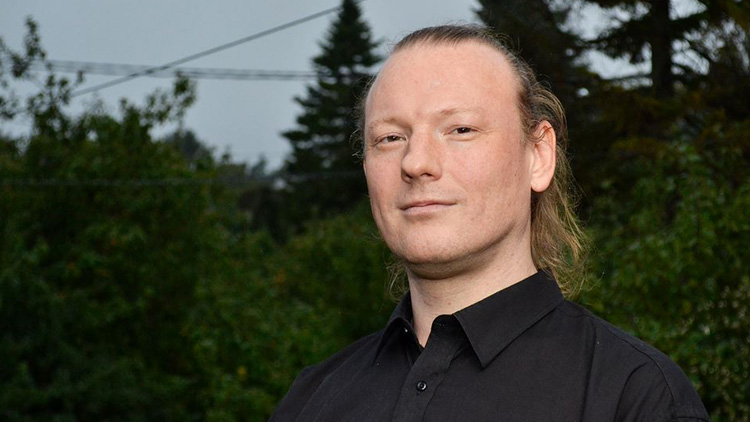
Estonia is often praised as the “good student” of the region because it scaled up harm reduction programs to respond to the epidemic. Do you agree?
I think it’s very commendable that the Estonian state has continued financing harm reduction services after the retreat of international donor organisations from the region, and lately even expanded budget allocations by more than half a million Euros. But our NGO’s position is that a much better quality and reach of the very same services could be achieved if there was better control over the quality of these services, which are provided by a handful of NGOs, each of which slightly differs from the others in their attitudes and practices. Until now, there has been no proper platform for client feedback — people who use the services are simply afraid to complain if a service gets disrupted or its quality wanes, because they suspect that even the little they’re offered now will be taken away if they say anything. LUNEST, the organisation of Estonian drug users, have started to rectify the problem — we’re installing anonymous feedback mailboxes at harm reduction and substitution therapy centres, together with information about how to contact us.
At the meeting of the EU national drug policy coordinators that took place in Tallinn this autumn, LUNEST were asked to present our account of the situation. In my presentation, I concentrated on the futility and counter-productivity of criminal enforcement measures in the fight against drug harms, pointing out the fact that, year by year, the more opioids the enforcement agencies have taken off the streets, the higher the number of deaths by overdose. Although correlation does not necessarily imply causation, I believe it can still “waggle its eyebrows suggestively and gesture furtively while mouthing “look over there”,” as eloquently put by Randall Munroe (xkcd.com), especially when similar robust correlations are well documented in many other countries. Taking that into account, I would suggest that reallocating some of the resources from enforcement to harm reduction might provide better results, but I guess that will be very hard to achieve, as, for some mysterious reason, evidence base and “unwanted consequences” don’t seem to be taken into consideration when assessing the effectiveness of criminalising, punitive methods of drug prevention.
What about the decriminalisation of drugs? Did it effectively reduce the harms of criminalisation?
Yes and no. The situation is complicated. In 2005, laws were changed so that possession of an amount of any illicit drug smaller than “the amount needed to intoxicate ten or more people” is no longer considered a criminal offence, but an administrative one, as is use of any such drug. On one hand, that’s an improvement, and I would say it has actually made possible the emergence into the public consciousness of drug user rights advocacy sentiments, as well as the activities of our organisation. On the other hand, alas, it discriminates heavily against chronic users of opioids and other drugs with a high addiction and tolerance-developing potential, who usually need much more than an average dose to achieve wanted effects. If you’re a regular user of illicit opioids, and you want to be on the safe side of the arbitrary criminal amount, your only option to stay safely below that amount is to visit your dealer once a day or even more often. I don’t believe that the point of the lawmakers was to foster tighter connections between people living with addiction and the criminal underground, but that has been one of the very real effects of that law.
So, to answer your question — yes, decriminalisation of drug use and possession of small amounts has reduced some of the harms of criminalisation, but it has not done this equally across the board.
Also, I think it is deeply unfair to put the burden of proof, as it were, on the shoulders of drug users who in most cases have no way of knowing if the amount of a black market drug in their possession is sub-criminal or criminal, because Estonia doesn’t provide drug testing services, or allow them to be provided.
You have created a group for people who use drugs, LUNEST. Can you tell me its story and mission?
The association has been active since May of 2016. We were officially registered last December as a non-profit with the name “Estonian Association of People Addicted to Psychotropic Substances LUNEST” (because the assistant judge in charge of the process of registration had qualms about giving official status to a group of people organising on the basis of an illegal activity — a drug users’ association — and we were in a hurry, so we complied and allowed ourselves to be labeled as “addicts”, although we also represent people who don’t identify as being addicted). We are a group of like-minded people who wish to protect the human rights of drug users, represent their interests, and promote more humane drug laws, health care of drug users, and their re-socialisation in Estonia.
Drawing from our own experiences and community support, and working in cooperation with similar organisations, as well as with state bodies and enforcement agencies, we hope to encourage the institutionalisation and sustainability of efficient support programs for drug users both on state as well as local level. We believe that it requires constant, two-way communication between our community and the state, as well as the involvement of former and current drug users into shaping drug policy and drug laws in the future, which we are also striving towards.
We agree with the experts, officials, and politicians who see drug dependence as more of a public health than a criminal justice problem, and who understand that the reason for the problem lies not with the drugs themselves, but with the substance use disorder that develops in some of the users of those drugs. A remarkable portion of the harms associated with drugs arise from the treatment of drug dependent people not as citizens in need of help from the social assistance and health care system, but more often as criminals. Adoption of these notions into the national drug policy has helped us find the courage to organise, as well as the hope that a more efficient, better-quality, more health- and human-centred drug policy in Estonia is both possible as well as feasible.
Is its membership from the whole country or only from the capital?
We have created a network of regional representatives with centres in Tallinn, Narva, and the Ida-Viru County. These are people who in their work often meet people who inject drugs, which on the one hand allows them to collect and exchange between themselves timely operative information about the situation and changes taking place in the community, while on the other hand disseminating trustworthy information to the community about the availability of harm reduction, addiction treatment, counselling, and health care services.
We have organised meetings for drug users with a specialist in infectious diseases and with representatives of the state employment insurance fund. At these information days, people have received answers to questions regarding their health and possibilities for better management of their livelihood, which has motivated them to seek more efficient help and treatment, or to return to discontinued treatment. The employment insurance fund has expressed a desire for further cooperation and is willing to start providing drug users with individual career development training. In addition, we have established cooperation with the STEP Program, bringing together previously penalised youths and employers willing to employ them.
Do you work together with other organisations?
We have a strong working relationship with the Institute of Public Health Development, and are planning a long-term cooperation for managing the exchange of key information regarding drugs, drug harms, and safer use of drugs.
As a member organisation of the Estonian consortium of communities affected by HIV, we have participated in formulating the goals of the consortium, developing the consortium’s strategic action plan for the upcoming years, and communicating with state structures.
Our representatives have participated as guests of the Eurasian Harm Reduction Network (now called Eurasian Harm Reduction Association) at the meeting of the UN Commission on Narcotic Drugs (CND), as well as harm reduction conferences in Vilnius and Montreal, where we established warm and lasting relationships with similar organisations and networks from other countries, as well as with official bodies managing drug prevention and addiction treatment.
How do you work on changing public attitudes to drug users in your country?
We have organised public engagements like picking up used syringes in areas affected by the drug crisis as part of the national clean-up campaign “Let’s do it!”, a public meeting in the framework of the international campaign “Support, Don’t Punish!”, and a free cinema night and meeting with the producers of the movie “A Day in the Life — the World of Humans Who Use Drugs” from the Hungarian NGO Rights Reporter Foundation (thank you, guys!). These engagements together with positive media coverage have drawn public attention to our activities, and have helped integrate and consolidate communities of drug users speaking different languages.
We have helped the Eurasian Harm Reduction Association to conduct a survey regarding violations of the human rights of women using drugs in Estonia. The preliminary, yet unpublished results of the study confirm our earlier conviction that violations of the rights of drug users, including their legal and parental rights, the right to equal treatment, the rights to health and best available health care, as well as other human rights by Estonian health care and law enforcement systems is frequent and widespread, or at least was frequent and widespread until very recently.
I already mentioned the fentanyl-themed meeting of EU national drug policy coordinators, held as part of Estonia’s presidency of the EU, where we were able to describe the experiences of our community and to highlight the aspects of Estonian national drug policy that we deemed either praiseworthy or inefficient. Not long after that, on October 30th, we were asked to also participate in a meeting of the expert working group of the governmental commission on drug prevention, consisting of representatives from the Ministry of the Interior, the Social Ministry, the Ministry of Justice, the Ministry of Education and Science, the Institute of Health Development, the State Medical Board, the Police and Border Guard Board, the Tax and Customs Board, and the State Prosecutor’s Office. We had a chance to present our goals and recent activities, to describe the issues that drug users and people living with addiction in Estonia are currently facing, to make a few proposals on how to solve such problems, and to respond to the very matter-of-fact questions by the members of the working group.
What would you recommend to decision makers in your country?
Trust science, and involve all stakeholders — including the communities of people most affected by the overdose crisis — in shaping the policies in the future.
To be more specific, we’d like them to start working towards a solution to the problem of unfounded stopping, searching, and penalisation of drug users, by, for example, adopting the so-called Good Samaritan Laws granting immunity from prosecution to those who have overdosed or who have notified emergency services of someone else’s overdose.
The amount of drugs considered ‘criminal’, especially fentanyl-based drugs, should be reviewed in the light of the assumption that currently neither the actual amounts used by chronic drug users, nor the fact that users have no way of knowing whether the amount in their possession is criminal or not, are not taken into account when establishing whether the confiscated amount of a drug is enough to intoxicate fewer or more than ten people.
We’d like to see a probe into the extent of and justification for the practice of post-release deportation of former convicts without citizenship status to Russia, where they are left without the support of both their families as well as the state, where their treatment is discontinued and where risks to their life and well-being are multiplied.
Training programs incorporating drug users should be provided to healthcare workers, providers of harm reduction services, law enforcement workers, journalists, and other people who come into contact with drug users and/or make decisions affecting the lives of drug users, with the aim of improving the attitudes of both officials as well as the general public towards people living with addiction, and promoting better understanding of the issues affecting our lives.
Availability of naloxone should be improved by disseminating it through harm reduction centres and detention facilities, but also by making it available over the counter at pharmacies. This should be done in tandem with raising the awareness of the general public, especially people who use drugs or are more likely to come into contact with such people, regarding availability and use of naloxone.
All in all, we believe that the development of drug policy interventions and assessment of their impact should be based on the European Commission’s Action Plan on Drugs (2017–2020), which, in addition to the programs already in place in Estonia, advises the implementation of such measures as supervised injection facilities and drug-testing services, development of age, gender, and orientation-specific services, better protection of the human rights of drug users, allocating resources for comprehensive community care and maintaining the continuity of addiction treatment, the introduction of clear indicators to assess the effectiveness of drug policy, more thorough monitoring and assessment of implemented measures, alternatives to punishment, etc.
Interview by Peter Sarosi
